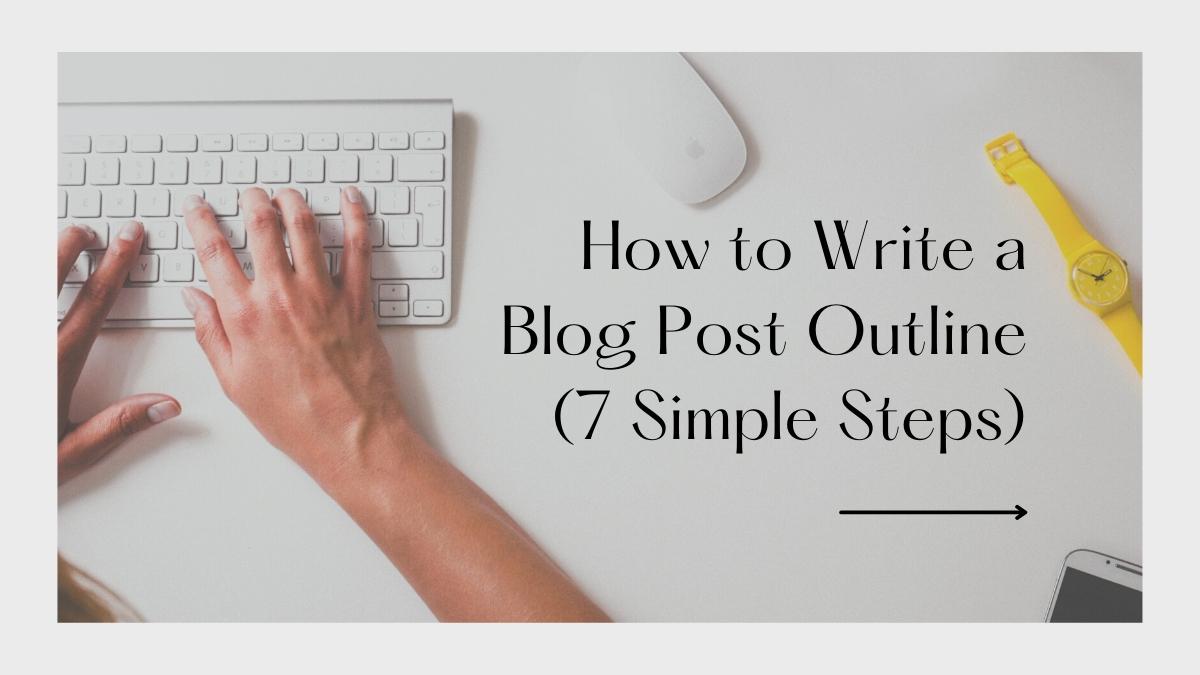
Every writer has experienced the agony of spending hours staring at a blank page without producing anything.
However, you are not required to begin your draught on a blank Google Doc. If you start with an outline, it will be a lot simpler.
A blog post outline will enable you to:
- the feared “writer’s block” will disappear.
- Prior to writing, organize your thoughts.
- Make sure you don’t omit any crucial details.
- Create a logical, easy-to-read framework for your blog content.
- Get on the same page with your editor, customer, or boss (if you are working with one).
You’ll discover how to create a blog post outline in this article. Let’s get going.
1. Choose your topic
Before you can write a blog post, you need to choose your topic. This can be a difficult task, especially if you’re new to blogging. But don’t worry, we’ve got you covered. Here are some tips for choosing a topic for your blog post:
- Think about what you want to write about. What are you passionate about? What do you have expertise in? These are great starting points for finding a topic for your blog post.
- Once you have an idea of what you want to write about, start brainstorming specific topics. Write down everything that comes to mind, no matter how big or small.
- Narrow down your list of topics by considering things like audience, tone, and format. Who will be reading your blog post? What kind of message do you want to convey?
2. Select your content format
If you want to write a blog post that will engage your reader and keep them coming back for more, it’s important to select the right content format. There are a few different ways to format your blog post, and each has its own advantages.
One popular way to format a blog post is to include an outline. An outline can help you organize your thoughts and ensure that your post flows well. It can also be helpful for readers who want to know what to expect from your article.
Another option is to write a listicle. Listicles are articles that are formatted as a list, and they can be very effective at grabbing readers’ attention. They’re also easy to scan, which can be helpful if your reader is short on time.
Finally, you could opt for a traditional article format.
3. Decide on your article’s angle
Before you start writing your blog post, it’s important to decide on your angle. What are you trying to say with your article? What do you want your readers to take away from it? Answering these questions will help you determine what direction to take your article in.
Once you know what you want to write about, it’s time to create an outline. This will help keep you focused and organized as you write. Begin by brainstorming a list of ideas related to your topic. Then, arrange them into a logical order. Finally, flesh out each point with more specific details.
With a clear plan in place, writing your blog post will be a breeze. So take the time to decide on your angle before getting started, and see how much easier the process becomes!
4. Use a template
If you want to improve your blog posts and make them more readable, then you should start using a template. A template will help you organize your thoughts and structure your ideas in a way that is easy for readers to follow.
When you use a template, you will also be able to include more information in each post. This is because the template will provide you with a space for an introduction, body paragraphs, and a conclusion. By including all of these elements in your posts, you will be able to give readers a complete picture of what you are trying to say.
If you are not sure where to find templates, there are many online resources that offer them for free. You can also find templates in some word processing programs like Microsoft Word or Google Docs.
5. Figure out what you need to cover (in your subheadings)
If you’re anything like me, the hardest part of writing a blog post is figuring out what to write about. I always start with a general idea for the topic of my post, but then I get stuck trying to figure out all of the subtopics I need to cover. Does this sound familiar?
If so, don’t worry! I’m here to help you figure out how to write a blog post outline that will make it easy for you to get all of your thoughts down on paper (or screen).
Here’s what you need to do:
- Start with your main topic.
- Write down a list of subtopics that you want to cover under that main topic.
- For each subtopic, write a few bullet points outlining what you want to say.
6. Add bullets under each subheading
When it comes to writing a blog post, one of the most important things to do is create an outline. This will help you organize your thoughts and ensure that your post is cohesive and flows well. Here are some tips on how to create a great blog post outline:
- Start with a catchy headline. This is what will draw readers in and make them want to read more.
- Make a list of the main points you want to cover. These will be your subheadings.
- Under each subheading, add a few bullet points outlining what you want to say in that section. This will help you stay on track as you write and make sure you hit all the key points you want to make.
- As you write, keep referring back to your outline so that you stay on track and don’t forget anything important.
7. Plan out your introduction and conclusion
When you’re ready to start writing your blog post, it’s important to have a clear plan for your introduction and conclusion. This will help you organize your thoughts and keep your writing on track.
Your introduction should be catchy and explain what the reader can expect from the rest of the article. The conclusion should summarize the main points of the article and leave the reader with something to think about.
If you take the time to plan out your introduction and conclusion before you start writing, you’ll be well on your way to creating a successful blog post!
Final thoughts
Sending your outline to a friend, editor, or coworker before you start writing is an excellent idea. They’ll be able to provide you with feedback and point out any errors, omissions, or lost opportunities.
Once your reviewer has provided comments, you may examine them and add their suggestions to your outline. Finally, it’s time to draught.
If you need help writing a blog post, read 7 Steps for Modern Bloggers on How to Write a Good Blog Post.




